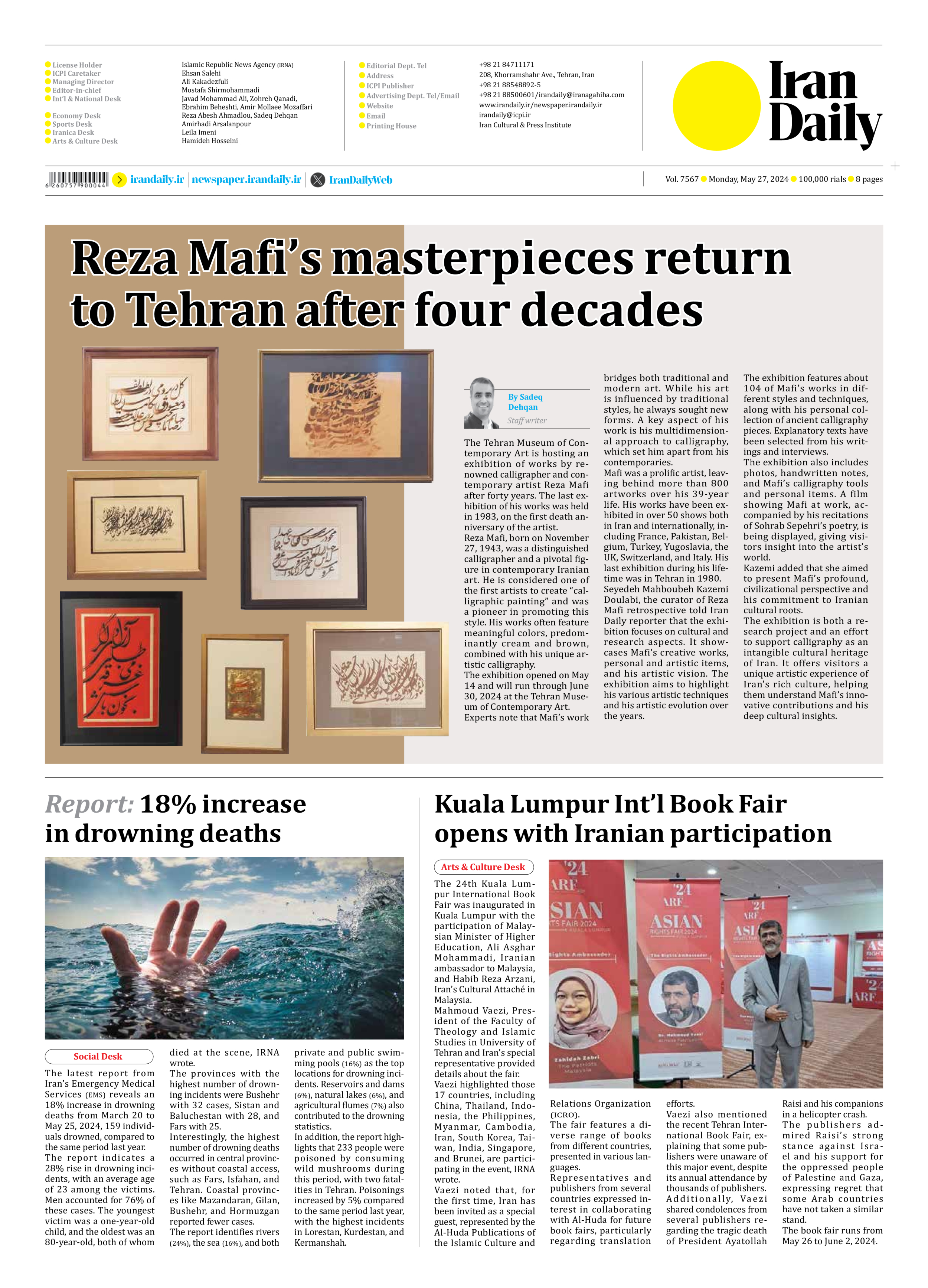
Reza Mafi’s masterpieces return to Tehran after four decades
By Sadeq Dehqan
Staff writer
The Tehran Museum of Contemporary Art is hosting an exhibition of works by renowned calligrapher and contemporary artist Reza Mafi after forty years. The last exhibition of his works was held in 1983, on the first death anniversary of the artist.
Reza Mafi, born on November 27, 1943, was a distinguished calligrapher and a pivotal figure in contemporary Iranian art. He is considered one of the first artists to create “calligraphic painting” and was a pioneer in promoting this style. His works often feature meaningful colors, predominantly cream and brown, combined with his unique artistic calligraphy.
The exhibition opened on May 14 and will run through June 30, 2024 at the Tehran Museum of Contemporary Art.
Experts note that Mafi’s work bridges both traditional and modern art. While his art is influenced by traditional styles, he always sought new forms. A key aspect of his work is his multidimensional approach to calligraphy, which set him apart from his contemporaries.
Mafi was a prolific artist, leaving behind more than 800 artworks over his 39-year life. His works have been exhibited in over 50 shows both in Iran and internationally, including France, Pakistan, Belgium, Turkey, Yugoslavia, the UK, Switzerland, and Italy. His last exhibition during his lifetime was in Tehran in 1980.
Seyedeh Mahboubeh Kazemi Doulabi, the curator of Reza Mafi retrospective told Iran Daily reporter that the exhibition focuses on cultural and research aspects. It showcases Mafi’s creative works, personal and artistic items, and his artistic vision. The exhibition aims to highlight his various artistic techniques and his artistic evolution over the years.
The exhibition features about 104 of Mafi’s works in different styles and techniques, along with his personal collection of ancient calligraphy pieces. Explanatory texts have been selected from his writings and interviews.
The exhibition also includes photos, handwritten notes, and Mafi’s calligraphy tools and personal items. A film showing Mafi at work, accompanied by his recitations of Sohrab Sepehri’s poetry, is being displayed, giving visitors insight into the artist’s world.
Kazemi added that she aimed to present Mafi’s profound, civilizational perspective and his commitment to Iranian cultural roots.
The exhibition is both a research project and an effort to support calligraphy as an intangible cultural heritage of Iran. It offers visitors a unique artistic experience of Iran’s rich culture, helping them understand Mafi’s innovative contributions and his deep cultural insights.







